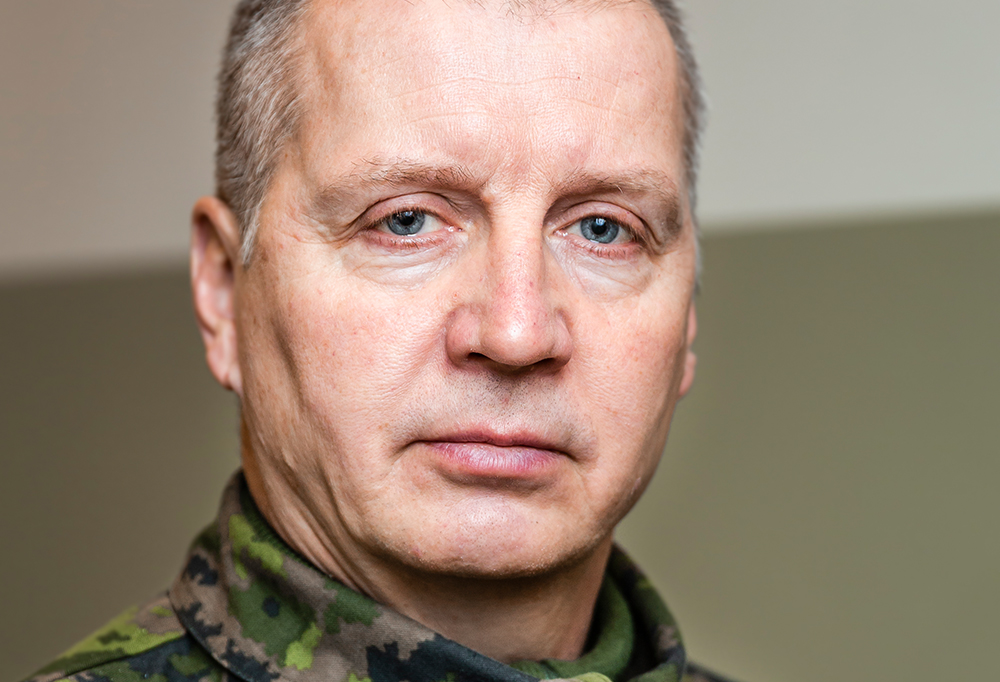No, kyllä ja ei... Sikäli kyllä, että molemmat ovat luonteeltaan taistelukentän takseja. Niillä liikkuvat joukot siis taistelevat jalan ilman ajoneuvojen suojaa ja tukea. Sikäli ei, että telavehkeen ja pyörälaitteen liikkuvuus on aivan erilainen. Mt-Lb menee yli sellaisesta hetteiköstä mihin Misu uppoaa kattoa myöten. Toisaalta Misu on ajanut sata kilometriä uutta toiminta-aluetta kohti kun Mt-Lb vielä odottaa että lavetit/juna saadaan paikalle lastattavaksi pidempää siirtymää varten. Joukkojen taktiset mahdollisuudet ja operatiiviset käyttöperiaatteet ovat siis erilaisia. Korvaavuus riippuu sitten lähinnä siitä, onko meillä muuten tarpeeksi telajoukkoja tekemään tarpeelliset ratkaisuliikkeet tai pystytäänkö taktiikan muutoksilla voitto saamaan myös pyöräjoukoilla. Ne tiedot lienevät moneen kertaan leimattua tavaraa...Olisiko Misuista korvaamaan MT-LB:t? Nehän alkavat olemaan jo iäkkäitä ja miinasuojaus on olematon.
Install the app
How to install the app on iOS
Follow along with the video below to see how to install our site as a web app on your home screen.
Note: This feature may not be available in some browsers.
You are using an out of date browser. It may not display this or other websites correctly.
You should upgrade or use an alternative browser.
You should upgrade or use an alternative browser.
Protolab PMPV 6x6 miehistönkuljetusajoneuvo (Misu)
- Viestiketjun aloittaja miheikki
- Aloitus PVM
Kustaanmiekka
Kenraali
Näin maavoimien komentaja Hulkko:
Tulevaisuuden taistelijan paras suoja on liike
– Meillä ei ole enää mahdollisuutta kätkeä omaa toimintaa, koska nykymaailmassa mikään ei pysy piilossa.
Silloin vaikutus vihollisen toimintaan on tehtävä liikkumalla ja keskittämällä tulivaikutus, Hulkko kuvailee.
Tulevaisuudessa maavoimissa panostetaan siis joukkojen nopeaan liikkuvuuteen.
Kaluston osalta se tarkoittaa sitä, että käytetään todennäköisesti kevyesti panssaroituja ajoneuvoja.
Mitä enemmän panssaria ajoneuvossa on, sitä hitaammaksi kulku muuttuu.
Hulkko huomauttaakin, että ajoneuvoihin pyritään vaikuttamaan heti kun ne pysähtyvät, ja siksi liike on myös joukon suoja.
– Arktiseen liikkuvuuteen pyritään etsimään ratkaisua muiden maiden kanssa.
Pintapaineen, joka osuu maahan soisessa, lumisessa ja järvisessä maastossa kuten Lapissa, on oltava mahdollisimman pieni.
Siksi tuleva ajoneuvo on todennäköisesti telakuorma-auton kaltainen.
Tulevaisuuden taistelijan paras suoja on liike
– Meillä ei ole enää mahdollisuutta kätkeä omaa toimintaa, koska nykymaailmassa mikään ei pysy piilossa.
Silloin vaikutus vihollisen toimintaan on tehtävä liikkumalla ja keskittämällä tulivaikutus, Hulkko kuvailee.
Tulevaisuudessa maavoimissa panostetaan siis joukkojen nopeaan liikkuvuuteen.
Kaluston osalta se tarkoittaa sitä, että käytetään todennäköisesti kevyesti panssaroituja ajoneuvoja.
Mitä enemmän panssaria ajoneuvossa on, sitä hitaammaksi kulku muuttuu.
Hulkko huomauttaakin, että ajoneuvoihin pyritään vaikuttamaan heti kun ne pysähtyvät, ja siksi liike on myös joukon suoja.
– Arktiseen liikkuvuuteen pyritään etsimään ratkaisua muiden maiden kanssa.
Pintapaineen, joka osuu maahan soisessa, lumisessa ja järvisessä maastossa kuten Lapissa, on oltava mahdollisimman pieni.
Siksi tuleva ajoneuvo on todennäköisesti telakuorma-auton kaltainen.
Rajajääkäri
Ylipäällikkö
Taas se väittely alkaa......
Kustaanmiekka
Kenraali
Loputon suo...
Toisaalta Suomessa riittää metsäautoteitä, onko pakko mennä sinne suolle ?
En tiedä suosta, mutta lumihanki määrää että jalan etenevät ukot liikkuvat hitaasti ja väsyvät nopeasti. Lisäksi ne metsäautotiet on ne mitkä miinoitetaan ekana.
Protolab on saanut Youtube-kanavan pystyyn. Ensimmäisen videon lopussa PMPV on liikenteessä henkilöautojen seassa ja siitä saa hieman vertailukohtaan koon suhteen.
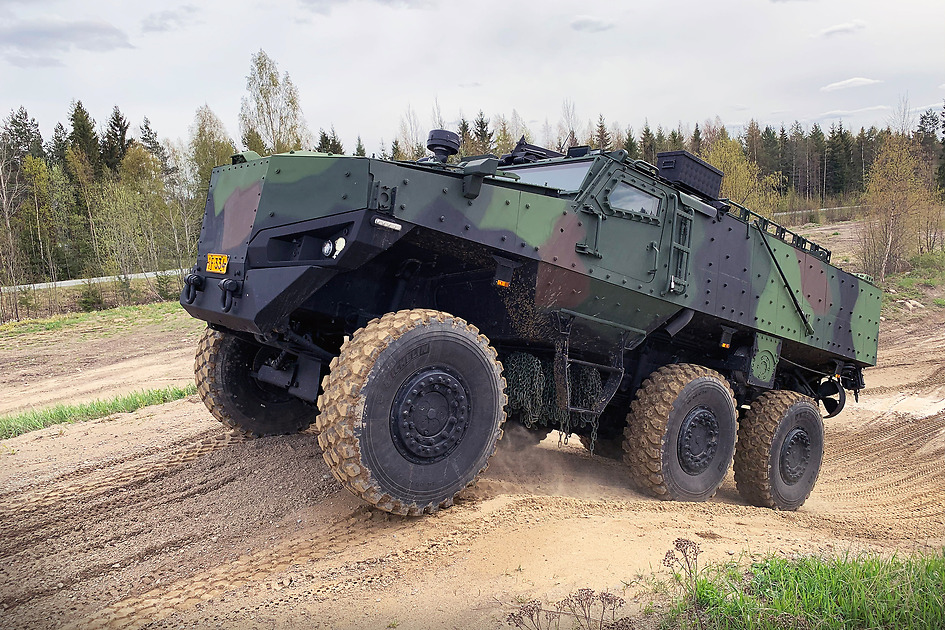
 www.protolab.fi
www.protolab.fi
Finnish Defence Forces receive first Protolab 6x6 Protected Multi-Purpose Vehicle (PMPV)
26 JUNE 2019
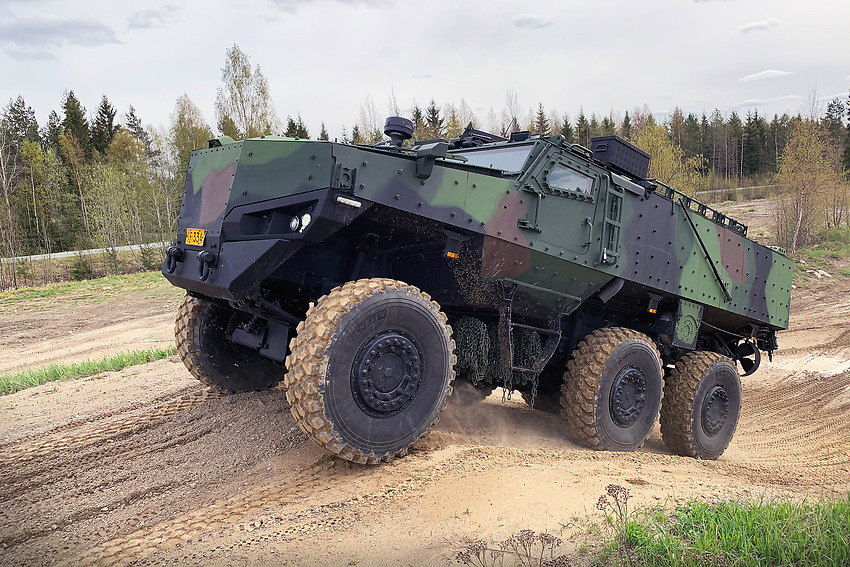
Protolab Oy is pleased to announce the delivery of the first Protolab 6x6 Protected Multi-Purpose Vehicles (PMPV) to the Finnish Defence Forces (FDF). Protolab is delivering four PMPVs to the FDF under a contract signed in 2018. The vehicles are being put through operational testing by the FDF as part of a wider modernisation programme to upgrade and enhance its armoured vehicle fleet.
The Protolab PMPV is exceptionally manoeuvrable and agile and can perform a range of mission roles including patrol, passenger and cargo transport, and command post. Amphibious and MEDIVAC variants are also available. The Protolab PMPV is a first of its kind 6x6 armoured personnel carrier developed to meet the mobility, protection and communication requirements of Special Operations Forces and paramilitary security forces.
The PMPV is designed from the ground up with integrated high level mine protection and ballistic protection according to customer-specified blast protection levels of STANAG 4569. The vehicle can be equipped with various customer required weapon systems.
The vehicle can carry two crew and ten fully-equipped troops, or a cargo payload of up to 10,000kg. Narrower than standard fighting vehicles, the vehicle’s 2.55m width makes it suitable for urban operations, with advanced mobility both on and off-road. Powered by a Cummins 6.7l multifuel engine and meeting Euro 3 emission levels, the vehicle meets EU truck road regulations qualifying it for registration as a N3G class truck (off-road).
These design features make it an ideal fit for the challenges being faced by modern armies.
“We designed the Protolab PMPV 6x6 to meet the requirements of today’s soldier and today’s asymmetric battlefield,” Juha Moisio, Business Development Director, Protolab Oy commented. “With a design approach based around the use of COTS parts with a small proportion of custom-made components, the Protolab PMPV is a cost-effective solution for the range of tasks faced by special operations, security and crisis management forces in the field.
“We are pleased to see the vehicle progressing well through field trials with the FDF and are getting positive feedback from the customer. We are confident that the Protolab PMPV will become the vehicle of choice for customers looking to replace their existing 6x6 vehicle fleets with a modern, protected and flexible solution.”
About Protolab Oy
Protolab specialises in the design, development and delivery of vehicles with high-level, integrated blast and ballistic protection. With a strong design capability, Protolab supports the entire vehicle development cycle, from the initial design through to prototypes and production. Protolab works with a network of key suppliers across Finland and Europe, acting as the design authority, integrator, testing and approval centre, and prime contractor for its customers.

Protolab - Finnish Defence Force receive first PMPV
Taisi olla tämä, jonka näin firman ikkunasta ajavan kolmostietä etelään pari kuukautta sitten.Protolab on saanut Youtube-kanavan pystyyn. Ensimmäisen videon lopussa PMPV on liikenteessä henkilöautojen seassa ja siitä saa hieman vertailukohtaan koon suhteen.

Protolab - Finnish Defence Force receive first PMPV
www.protolab.fi
Huhta
Greatest Leader
– Arktiseen liikkuvuuteen pyritään etsimään ratkaisua muiden maiden kanssa.
Pintapaineen, joka osuu maahan soisessa, lumisessa ja järvisessä maastossa kuten Lapissa, on oltava mahdollisimman pieni.
Siksi tuleva ajoneuvo on todennäköisesti telakuorma-auton kaltainen. .muuttuva_vie2 { width: 320px; height: 50px; } @media(min-width: 500px) { .muuttuva_vie2 { width: 468px; height: 60px; } } @media(min-width: 935px) { .muuttuva_vie2 { width: 728px; height: 90px; } } @media(min-width: 1200px) { .muuttuva_vie2 { width: 980px; height: 120px; } }
Ei mitään uutta.
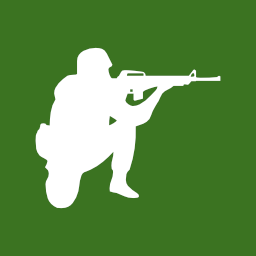
Miehistön kuljetus
Vaikuttaisi olevan XA-180/185 lisäpanssaroinnilla. Itsellä tuli mieleen modernisointihankkeen proto? Niitähän taisi olla 4 kpl ja joku niistä oli lisäpanssaroinnilla. Mistä löysit tuon kuvan tarkalleen ottaen? Jos sieltä löytyisi myös ajoneuvon rekisterinumero, niin voisi vertailla.
Lisäys:
Tuolla vähän lisää juttua:

A joint European project – The development and acquirement of new generation all-terrain vehicles - Finabel
On the 25th of February, Germany, the Netherlands, Finland, the UK, Norway and Sweden announced the beginning of a new joint military project during a meeting in the German city of Bonn. A photo posted on twitter by a Swedish officer present at the meeting shows the discussions revolved around...
 finabel.org
finabel.org
A joint European project – The development and acquirement of new generation all-terrain vehicles
- admin7035
- 13 March 2019
- Info Flash
- 0 Comments
On the 25th of February, Germany, the Netherlands, Finland, the UK, Norway and Sweden announced the beginning of a new joint military project during a meeting in the German city of Bonn. A photo posted on twitter by a Swedish officer present at the meeting shows the discussions revolved around the development and acquirement of a new generation of all-terrain vehicles that should be the successor of current models such as the Bvs10 model or the Bronco 3. The project is however only at its initial phase and little additional information has been made available to the general public (Gain, 2019). One thing is certain, there is a common need for military cooperation and joint acquisitions of military material in Europe. Nonetheless, while the EU is increasing its initiatives regarding European defence, this project will be developed outside EU and NATO mechanisms. On the other hand, it is not surprising to see that countries like France, the Netherlands, Sweden and the United Kingdom are present at that meeting. These countries all have the Bvs10 vehicles within their vehicle fleets, and they might be looking to seize good opportunities to find a substitute to these vehicles. In the continuity of the Bvs10, the new generation all-terrain vehicle should be highly adaptable to varying environments ranging from mountains, arctic landscapes, jungles, and deserts. Moreover, the vehicles should be modular in order to be adaptable for the different uses required by the countries involved in the project.
(Source: BvS10 Mk II All-terrain amphibious armoured vehicle, https://www.armyrecognition.com)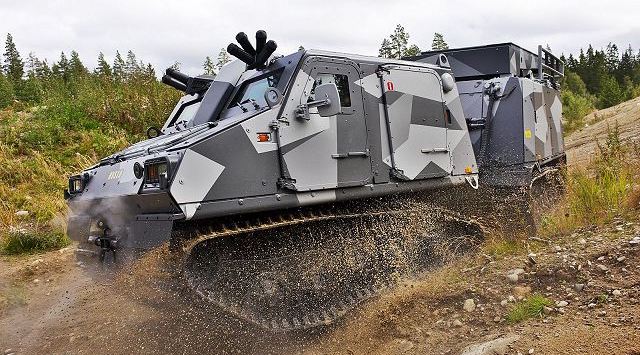
Another aspect of the project is that it will not be executed within either an EU or a NATO framework. Such an initiative is definitely not the first of its kind, and it is a common thing for European countries to work on a multinational basis outside of the EU and NATO. Projects such as CAMO and SCAF illustrate this trend. In this case, one reason might lie in the fact that many of the countries involved are neither NATO nor EU members at the same time. Only Germany, the Netherlands and the United Kingdom are members of both organizations. However, in the case of the UK, the different options regarding defence policies have not yet been premised for a post-Brexit scenario. On the other hand, neither Sweden nor Finland are NATO members and their defence policies are oriented towards neutrality, while Norway is only a NATO member. This might partially explain why these countries feel a need to work together within a multilateral framework. Moreover, it could also be argued that countries prefer to cooperate with other nations with which they already have a history of corporation. While some might regret that these initiatives are outside of EU monitored mechanisms, it should rather be seen as a good compromise for the EU and European countries. By not buying foreign ‘off the shelf’ equipment, these countries would not only improve European defence industries but also their strategic autonomy, thus reinforcing both the EU and European members within NATO.
(Credit to Somchai Kongkamsri, pexels.com/photo/shoot-army-machine-gun-armed-35825/)
Multilateral ventures are of great interest as they provide substantial benefits to partnering countries. They enable countries to share know-how and decrease costs related to R&D, while also providing economies of scale (Delcker, 2017). At the same time, it increases interoperability between their different national forces. However, recent defense industrial projects have shown that cooperating on the development of new weapons and equipment is not an easy task. Indeed, certain issues related to exportation, manufacturing, and weapon usage; if not clearly defined at the beginning of the process, can undermine the benefits provided by joint ventures and can even create political tensions amongst partners (Wintour, 2019). This was for instance the case when Germany blocked the export of Meteor missiles manufactured by MDBA to Saudi Arabia, which included German-made components. This led to great frustration for France and the UK, Germany’s major partners in this venture, which could not guarantee the execution of a contract estimated at 1 billion dollars. The German embargo was mainly enforced for national political reasons following the Khasshoggi affair, and due to Berlin’s reluctance to transfer arms to any party involved in the Yemen war. Restrictions on exports imposed by one partner is the most common reason for tension between partners as an embargo can deteriorate the credibility of a countries defence industry. Moreover, it can also affect the defence industry’s dynamism as the different partners and manufactures involved in the development of equipment or weapon are at stake.
Technical specifications are another issue that needs to be determined at the beginning of the process. A good example was the Airbus A400m project were each country demanded that the plane should be equipped with several technical specifications for their own national imperatives. This, in return, increased the costs and delayed the production of the Airbus A400m significantly. These issues can push some countries to downsize their orders or even to withdraw from the project – as in the case with Italy – thus only increasing the unit cost of the plane (Macalister & Willan, 2001). As we have seen, defense cooperation can provide substantial benefits but also creates the necessity for countries to discuss future issues regarding technical specifications, restrictions on exports in order to avoid cost overruns, and more importantly keeping the credibility of their Defense industries vis-à-vis potential buyers. One thing is sure, the current six countries involved in this project will have to find ways to develop efficient mechanisms that will enable them to avoid political issues, as well as sustaining exports. The European Defence industry is incrementally confronted with new competitors coming from countries like Brazil, South Korea, Israel and others whom are now able to provide sophisticated valuable military equipment to countries all around the world. While this ‘venture’ is still a work in progress, it would be interesting to see how these countries implement new processes that could improve European Defence.Written by Emma Marty on behalf of the Finabel Permanent Secretariat
Written by Victor Mahieu on behalf of the Finabel Permanent Secretariat
References
- (2019), WINTOUR, Patrick, “Jeremy Hunt urges Germany to rethink Saudi arms sales ban”, The Guardian, (Accessed 7 March 2019) https://www.theguardian.com/world/2...urges-germany-to-rethink-saudi-arms-sales-ban
- (2001), MACALISTER, Terry & WILLAN, Philip, “Italy flip-flops on Airbus project”, The Guardian, (Accessed 8 March 2019) https://www.theguardian.com/business/2001/oct/24/13
- (2017), DELCKER, Janosch, “EU could slash costs by pooling military spending: study”, Politico, (Accessed 7 March 2019) https://www.politico.eu/article/eu-military-spending-cuts-study-news-trump-russia-mckinsey
- (2019), GAIN, Nathan, “Six pays s’unissent pour un nouveau chenille tout-terrain”, Forces Operations Blog, (Accessed 3 March 2019) http://forcesoperations.com/six-pay...EpO1adTLyg0X7iA7Cr9j6Wy7kFmAcK0xJcSek70xeo7j0
Viimeksi muokattu:
Einomies1
Respected Leader
Jos ajelit Etelä-Pirkanmaalla niin nuo videot ovat sieltä.Taisi olla tämä, jonka näin firman ikkunasta ajavan kolmostietä etelään pari kuukautta sitten.
Kolmostie, liittymän 38 eteläpuolella.Jos ajelit Etelä-Pirkanmaalla niin nuo videot ovat sieltä.
Einomies1
Respected Leader
Todennäköisesti tuo MISU olisi eto peli kaupungeissa, koska se on kapea ja ketterä sekä hyvin suojattu. Kovalla alustalla tuolla meno on mukavampaa ja huiput on paremmat. Ehkä torjuntapataljoonien ja kaupunkijääkärien menopeli?No, kyllä ja ei... Sikäli kyllä, että molemmat ovat luonteeltaan taistelukentän takseja. Niillä liikkuvat joukot siis taistelevat jalan ilman ajoneuvojen suojaa ja tukea. Sikäli ei, että telavehkeen ja pyörälaitteen liikkuvuus on aivan erilainen. Mt-Lb menee yli sellaisesta hetteiköstä mihin Misu uppoaa kattoa myöten. Toisaalta Misu on ajanut sata kilometriä uutta toiminta-aluetta kohti kun Mt-Lb vielä odottaa että lavetit/juna saadaan paikalle lastattavaksi pidempää siirtymää varten. Joukkojen taktiset mahdollisuudet ja operatiiviset käyttöperiaatteet ovat siis erilaisia. Korvaavuus riippuu sitten lähinnä siitä, onko meillä muuten tarpeeksi telajoukkoja tekemään tarpeelliset ratkaisuliikkeet tai pystytäänkö taktiikan muutoksilla voitto saamaan myös pyöräjoukoilla. Ne tiedot lienevät moneen kertaan leimattua tavaraa...
Huhta
Greatest Leader
No, kyllä ja ei... Sikäli kyllä, että molemmat ovat luonteeltaan taistelukentän takseja. Niillä liikkuvat joukot siis taistelevat jalan ilman ajoneuvojen suojaa ja tukea. Sikäli ei, että telavehkeen ja pyörälaitteen liikkuvuus on aivan erilainen. Mt-Lb menee yli sellaisesta hetteiköstä mihin Misu uppoaa kattoa myöten. Toisaalta Misu on ajanut sata kilometriä uutta toiminta-aluetta kohti kun Mt-Lb vielä odottaa että lavetit/juna saadaan paikalle lastattavaksi pidempää siirtymää varten. Joukkojen taktiset mahdollisuudet ja operatiiviset käyttöperiaatteet ovat siis erilaisia. Korvaavuus riippuu sitten lähinnä siitä, onko meillä muuten tarpeeksi telajoukkoja tekemään tarpeelliset ratkaisuliikkeet tai pystytäänkö taktiikan muutoksilla voitto saamaan myös pyöräjoukoilla. Ne tiedot lienevät moneen kertaan leimattua tavaraa...
Onkohan tuolle todellisuudessa tarvetta kovassa paikassa? MT-LB:n kantama tiellä huitelee jossakin 500 km tienoilla. Kulumaahan siinä tulee, ja onhan noita juttuja ollut, että 10 tkm jälkeen saa jo rempata koko vaunun tai pistää pataan. Mutta ei luulisi pidemmänkään maantiesiirtymän olevan kovin kriittistä kriisisissä, jos polttoainettakin on pidempään siirtymään?
Tai sitten se on. Abramsin telaketjun pitäisi kestää 2000 mailia ja keskimäärin jäädään alle tonnin. Että toki kaikki on suhteellista.
Kysymys voi olla myös siitä, miltä se tie näyttää sen jälkeen kun siitä on paahtanut pataljoona-kaksi terästelakalustoa. Pääseekö huolto enää kulkemaan ennen pientä pintaremonttia?Onkohan tuolle todellisuudessa tarvetta kovassa paikassa? MT-LB:n kantama tiellä huitelee jossakin 500 km tienoilla. Kulumaahan siinä tulee, ja onhan noita juttuja ollut, että 10 tkm jälkeen saa jo rempata koko vaunun tai pistää pataan. Mutta ei luulisi pidemmänkään maantiesiirtymän olevan kovin kriittistä kriisisissä, jos polttoainettakin on pidempään siirtymään?
Tai sitten se on. Abramsin telaketjun pitäisi kestää 2000 mailia ja keskimäärin jäädään alle tonnin. Että toki kaikki on suhteellista.
En muuten ole koskaan ollut tela-ajoneuvon kyydissä. Onko meno merkitsevän äänekästä ja tärisevää kovalla alustalla kuten asfaltilla? Jos on, niin matkustajien taistelukunto ei välttämättä ole kohdillaan muutaman sadan kilsan jälkeen.
ajs178
Respected Leader
Kysymys voi olla myös siitä, miltä se tie näyttää sen jälkeen kun siitä on paahtanut pataljoona-kaksi terästelakalustoa. Pääseekö huolto enää kulkemaan ennen pientä pintaremonttia?
En muuten ole koskaan ollut tela-ajoneuvon kyydissä. Onko meno merkitsevän äänekästä ja tärisevää kovalla alustalla kuten asfaltilla? Jos on, niin matkustajien taistelukunto ei välttämättä ole kohdillaan muutaman sadan kilsan jälkeen.
T-55:llä olen mennyt asfaltilla, mutta sanoisin, että lähtökohtaisesti kaikilla kuulosuojaimet päässä, niin ei oo ongelmaa. Jälkiä telat kyllä asfalttiin jättävät
Samovarius
Ylipäällikkö
Jaa-a, eiköhän Suomessa ole niitä pikkuteitä joista puolet soralla siinä määrin, ettei ällitällillä ole pakko valtatietä pitkin kyntää. Ja jos taas ei ole, niin ongelmaha ratkeaa tavallaan itsestään. Luulisi myös valtatiellä jyystävän ällitällipataljoonan olevan opponentin ilmaelementille kuin lapsi turvapaikanhakijalle.
Einomies1
Respected Leader
Kysymys kuuluu että kuinka paljon todellisuudessa MT-LB ajaisi maastossa ja tiellä suhteessa? Siirtymät mentäisiin teillä tietysti ja varsin hitaasti mikä tekee kolonnasta alttiin ilmauhkalle. Maastoon vasta sitten kun aletaan etenemään taisteluun / hyökkäyskynnykselle?
Taitaa olla juuri niin että lähempänä kontaktia telakalusto on pätevintä, koska ei olla sidottuja teihin jotka möyritään rullalle ja voidaan hajauttaa joukot jonomuodostelmasta paremmin.
Siirtymät ja liikekannallepano onkin sitten tuskaisempaa ja hidasta, kun kuljetuslavetteja tarvitaan paljon ja vaunut eivät kestä pitkää marssia.
Taitaa olla juuri niin että lähempänä kontaktia telakalusto on pätevintä, koska ei olla sidottuja teihin jotka möyritään rullalle ja voidaan hajauttaa joukot jonomuodostelmasta paremmin.
Siirtymät ja liikekannallepano onkin sitten tuskaisempaa ja hidasta, kun kuljetuslavetteja tarvitaan paljon ja vaunut eivät kestä pitkää marssia.

kimmo.j
Greatest Leader
Puhumattakaan itä-kaluston vara-osa ongelmista.Kysymys kuuluu että kuinka paljon todellisuudessa MT-LB ajaisi maastossa ja tiellä suhteessa? Siirtymät mentäisiin teillä tietysti ja varsin hitaasti mikä tekee kolonnasta alttiin ilmauhkalle. Maastoon vasta sitten kun aletaan etenemään taisteluun / hyökkäyskynnykselle?
Taitaa olla juuri niin että lähempänä kontaktia telakalusto on pätevintä, koska ei olla sidottuja teihin jotka möyritään rullalle ja voidaan hajauttaa joukot jonomuodostelmasta paremmin.
Siirtymät ja liikekannallepano onkin sitten tuskaisempaa ja hidasta, kun kuljetuslavetteja tarvitaan paljon ja vaunut eivät kestä pitkää marssia.
Ällin kohdalla tämä ei ole ilmeisesti akuutti ongelma, mutta ongelma on kuitenkin olemassa. Aivan kuten tykistö ketjussa on kerrottu.
kimmo.j
Greatest Leader
Omat kokemus T-55 kalustosta kertoo, että oleskelu vaunun lähellä ilman kuulonsuojausta on tuskallista, pidin aina nakkipipon tiukasti päässä.Kysymys voi olla myös siitä, miltä se tie näyttää sen jälkeen kun siitä on paahtanut pataljoona-kaksi terästelakalustoa. Pääseekö huolto enää kulkemaan ennen pientä pintaremonttia?
En muuten ole koskaan ollut tela-ajoneuvon kyydissä. Onko meno merkitsevän äänekästä ja tärisevää kovalla alustalla kuten asfaltilla? Jos on, niin matkustajien taistelukunto ei välttämättä ole kohdillaan muutaman sadan kilsan jälkeen.
Ällin kyydissä pidin myös nakkipipoa, mutta ihan samanlaisella varmuudella en osaa lausua mitään. Muistikuva on kuitenkin sellainen, että Älli olisi hiukan hiljaisempi. Isompi ongelma Ällissä on sisätila joka on nuorelle miehelle ahdas, tarkemmin sanottuna matala ja kun takaosa pakataan täyteen taisteluvaruisteisia miehiä ahtaus nousee ongelmaksi. Toki kyyti on parempi kuin traktorin lavalla, pyöräilystä puhumattakaan, mutta tuskin rentouttava. Ainakaan jos verrataan nykyaikaisiin länsi-vaunuihin, tai PMPV:hen.

